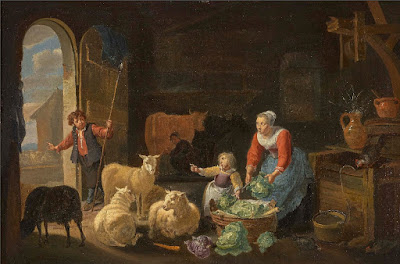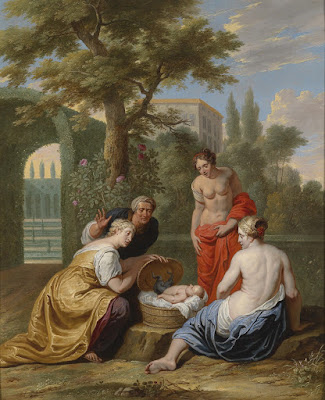 |
| attributed to Willem van Herp Atalanta and Meleager before 1677 oil on copper Musée Hyacinthe Rigaud, Perpignan |
 |
| attributed to Willem van Herp Deer Hunt before 1677 oil on copper Musée Hyacinthe Rigaud, Perpignan |
 |
| Willem van Herp (figures) and Guillam Forchondt (landscape) Departure of the Israelites before 1677 oil on copper private collection |
 |
| Willem van Herp (figures) and Guillam Forchondt (landscape) Noli me tangere before 1677 oil on copper private collection |
 |
| Willem van Herp Abraham and the Three Angels ca. 1650-60 oil on copper Hessisches Landesmuseum, Darmstadt |
 |
| Willem van Herp Christ's Entry into Jerusalem before 1677 oil on canvas Nationalmuseum, Stockholm |
 |
| Willem van Herp Achilles discovered amongst the Daughters of Lycomedes before 1677 oil on panel National Trust, Felbrigg Hall, Norfolk |
 |
| Willem van Herp The Visitation 1659 oil on canvas private collection |
 |
| Willem van Herp Allegory of Faith and Devotion before 1677 oil on canvas private collection |
 |
| attributed to Willem van Herp Stable Interior before 1677 oil on canvas private collection |
 |
| Willem van Herp Finding of the infant Erichthonius by the Daughters of Cecrops ca. 1650 oil on copper private collection |
 |
| Willem van Herp Atalanta and Hippomenes ca. 1650 oil on canvas National Museum, Warsaw |
 |
| Willem van Herp Christ before Caiaphas before 1677 oil on canvas private collection |
 |
| Willem van Herp Esther at the Palace of Ahasuerus before 1677 oil on copper private collection |
 |
| Willem van Herp The Transfiguration before 1677 oil on copper private collection |
"Willem van Herp was artistically trained around the years 1625-29 by the painters Damiaan Wortelmans and Hans Biermans in Antwerp. By 1637-38 he was enrolled in the Antwerp Guild of Saint Luke. He is known mainly for a prolific output of narrative religious and mythological scenes, often of small format, including many on copper. From 1651 he began to work for the art merchant Matthijs Musson, at which time his artistic production multiplied, with frequent repetitions of the same compositions in an almost industrial manner. In the main, these were copies and pastiches of works by Rubens and Van Dyck. Van Herp also drew on painters such as Daniel Seghers and Jan Boeckhorst. His career seems to represent a shift away from the traditional model of unique commissions for specific patrons, and toward a more market-driven commodification catering to an anonymous public."
– from a biographical sketch at Museo del Prado, Madrid